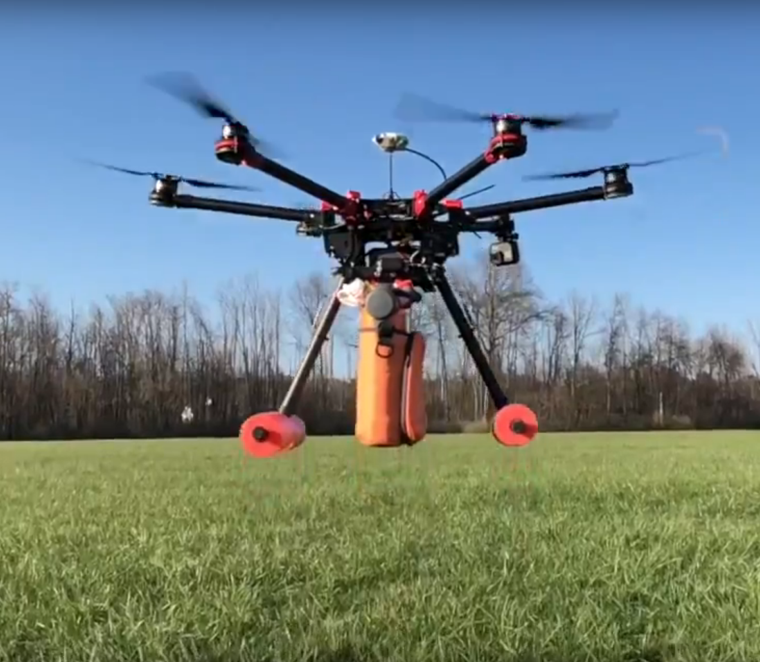Drone Response
Small Unmanned Aerial, Land, or Submersible Vehicles (drones) are increasingly deployed to support time-critical tasks such as search-and-rescue missions, fire surveillance, and medical deliveries. In current scenarios their use is typically limited to manual operation by a remote pilot controlling a single Unmanned Aerial Vehicle (UAV); however, we envision drones playing a far more extensive role in emergency response scenarios of the future.
Drone Response Spinoff!
We are excited to announce the launch of the DroneResponse spinoff company led by joint CEOs Bill Reh and Shannon O'Harren. Together, we are taking our DroneResponse technology to the next level to support diverse applications related to emergency response, data collection and analytics, all while continuing to explore cutting-edge research challenges.
Our project goes far beyond current practice and leverages the capabilities of a cohort of drones to support emergency response scenarios -- serving as semi-autonomous, self-coordinating, trusted members of a mission team. Achieving this vision requires new conceptual models and underlying technologies to empower human-drone partnerships. While human incident commanders are responsible for establishing actionable mission goals, cohorts of drones will contribute towards success of the mission through prioritizing, allocating, and enacting appropriate tasks. In this way, humans and drones will work collaboratively to save lives, minimize property damage, and to generally improve the quality of life for impacted members of the community.
Our Projects
DroneResponse is built as a flexible product-line, meaning that it is designed to support diverse applications and to support different types of drones and flight controllers. Our current projects include Onboard Analytics funded by NASA, Emergency Response funded by NSF, and a Computer Vision project funded by IARPA.
Selected Publications
A selection of relevant papers describing our work include:- The Next Generation of Human-Drone Partnerships:Co-Designing an Emergency Response System''(preprint)
- Extending MAPE-K to support Human-Machine Teaming(preprint)
- Interlocking Safety Cases for Unmanned Autonomous Systems in Shared Airspaces(preprint)
Related Funding
- $1,186,394, NSF CPS:Medium:Interactive Human-Drone Partnerships in Emergency Response Scenarios, (Jane Cleland-Huang, Walter Scheirer)
- $749,856, NASA: Safe Deployment of Small Unmanned Aerial Systems through On-Board Monitoring and Assessment, (Jane Cleland-Huang, Myra Cohen, Nitesh Chawla)
- (Multi-University), IARPA, Biometric Recognition and Identification at Altitude and Range, (Notre Dame: Pat Flynn, Kevin Bowyer, Adam Czajka, Jane Cleland-Huang)
- $100,000, SCC-Planning: Coordinated Autonomous Operation of UAVs in Urban First Responder Scenarios, (Christian Poellabauer, Gregory Madey, Jane Huang, Vijay Gupta)
- $85,000 CCF-1741781, EAGER: SHF: A Community Case Environment for Empowering Transformative Requirements Engineering Research (June 1st 2017 - May 31st 2018).

